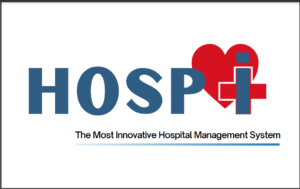Complementary Medicine is a broad term that encompasses a wide range of health care practices that are not part of conventional Western medicine. CAM practices are often used alongside conventional medicine, or as an alternative to it.
There are many different types of Complementary and alternative medicine, including:
- Acupuncture: a method used in traditional Chinese medicine that involves placing tiny needles at strategic locations beneath the skin.
- Herbal medicine: The use of plants and plant extracts to treat illness.
- Homeopathy: A system of medicine that uses highly diluted substances to stimulate the body’s own healing response.
- Massage therapy: The use of hands to manipulate the body’s soft tissues to promote relaxation and healing.
- Yoga: a mind-body technique that combines meditation, breathing exercises, and physical postures.
- Dietary supplements: Products that are taken in addition to the diet and are intended to provide nutrients, herbs, or other substances that are not obtained from food.
- Mind-body therapies: Practices that focus on the mind and body’s interaction, such as tai chi, qigong, and biofeedback.
Why do people use Complementary and alternative medicine?
There are many reasons why people use CAM. Some people believe that CAM is more natural and less harmful than conventional medicine. Others believe that CAM can help to relieve symptoms that are not well-controlled by conventional medicine. Still others use CAM for its spiritual or religious benefits.
A 2019 survey by the National Center for Complementary and Integrative Health (NCCIH) found that about 1 in 3 adults in the United States use some form of CAM. The CAM techniques most frequently employed were:
- Acupuncture: 18.9%
- Herbal medicine: 17.7%
- Massage therapy: 11.3%
- Dietary supplements: 10.9%
- Yoga: 5.1%
What is the evidence for CAM?
The evidence for the effectiveness of Complementary and alternative medicine is mixed. Some CAM practices have been shown to be effective for certain conditions, while others have not been shown to be effective at all. There is also some evidence that CAM can interact with conventional medicine, so it is important to talk to your doctor before using any CAM practice.
A 2016 review of the evidence for CAM by the NCCIH found that there was moderate evidence for the effectiveness of CAM for the following conditions:
- Migraine headache: Acupuncture
- Chronic low back pain: Massage therapy
- Fibromyalgia: Exercise
- Depression: Exercise
- Anxiety: Meditation
There was also some evidence for the effectiveness of CAM for the following conditions:
- Arthritis: Glucosamine and chondroitin
- Asthma: Butterbur
- Premenstrual syndrome (PMS): Vitex
- Sleep problems: Melatonin
How to choose a CAM practitioner?
If you are considering using CAM, it is important to choose a qualified practitioner. There are many different CAM practitioners, so it is important to do your research and find someone who is experienced and knowledgeable in the type of CAM you are interested in.
The NCCIH has a website that can help you find a qualified CAM practitioner in your area. The website also has information about different CAM practices and their effectiveness.
Safety of CAM
CAM is generally considered to be safe when used appropriately. However, there are some risks associated with CAM, such as:
- Adverse reactions: Some CAM practices can cause adverse reactions, such as allergic reactions or interactions with conventional medicine.
- Misdiagnosis: CAM practitioners may not be qualified to diagnose medical conditions, so it is important to see a doctor if you have any concerns about your health.
- False hope: CAM practitioners may give false hope to patients, leading them to delay or forgo conventional medical treatment.
Conclusion
CAM can be a helpful addition to conventional medicine for some people. However, it is important to choose a qualified practitioner and to be aware of the risks associated with CAM.
Common CAM practices
Here is a more detailed look at some of the most common CAM practices:
- Acupuncture: Traditional Chinese medicine technique known as acupuncture involves placing tiny needles at specific points on the skin. According to theory, acupuncture works by promoting the body’s natural healing process.
- Herbal medicine: The use of plants and plant extracts is known as herbal medicine.


